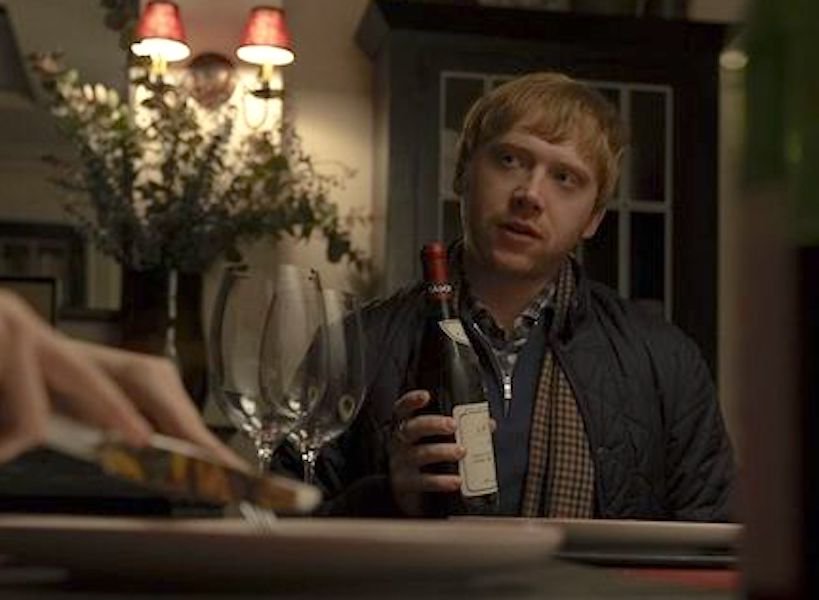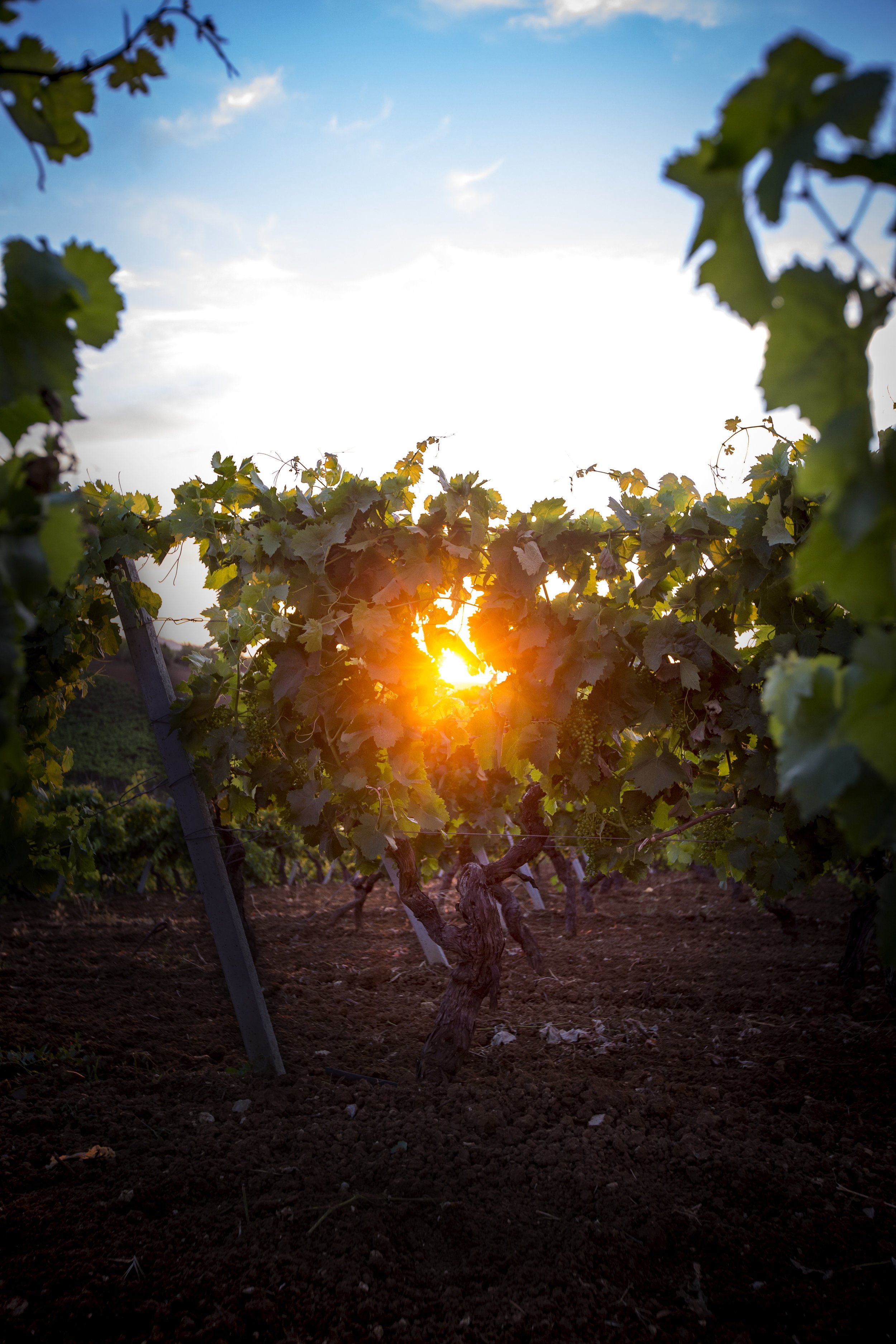If you're anything like me, you probably oscolate between Mexcian food and Italian food regularly. If I'm not eating tacos, I'm eating spaghetti. If I'm not eating lasagna, I'm eating a burrito. If there's a green jar in my fridge, it's probably filled with salsa verde or pesto; olives or jalapeños.
I have two huge pots with which I make two huge batches of meat once a month: one is filled with pork for tacos, the other is for making ragu. If I'm cooking a steak, it's probably going to be seasoned with rosemary and paired with Sangiovese. You get the picture.
If you even remotely care about Italian food—even just a little bit—then you're going to want a handful of these wines around the house. The wines are not just delicious, they pair beautifully with a variety of simple foods that you probably eat regularly.
2020 Erste + Neue White Peak Vigneti Delle Dolomiti Bianco $13.99 - ‘Erste + Neue' means 'First + New’. The name represents the merger of the first (‘erste') co-op cellar in Caldaro, which was founded in 1900, and the newest ('neue') co-op cellar after the Alto Adige became a part of Italy in 1919, which was founded in 1925. The two co-ops united under one label in 1986.
They make the range of white wines that you would expect including Sauvignon, Pinot Bianco, Pinot Grigio and an excellent Müller Thurgau. The White Peak is a blend of Sauvignon Blanc, Pinot Bianco, and Chardonnay, each fermented individually, then blended together for a fresh, racy, and refreshing Italian white.
I already love the Erste + Neue wines, but this new White Peak is a patio pounder like you've never had. It's a classic high-elevation white (from the Dolomites!). It is so snappy and zippy that you'll probably crush the entire bottle within 20 minutes of opening it. I would do this with appetizers while I'm waiting for the main meal: maybe some canellini bean bruschetta with garlic and rosemary, or some olives and cheese.
2020 Erste + Neue Alto Adige Pinot Grigio $16.99 - If you think all Italian Pinot Grigio is just quaffable slop these days, I dare you to try the Erste + Neue expression. Pinot Grigio sometimes lacks the vivid freshness of Pinot Bianco, but the best examples from the Alto Adige have the typical varietal texture and spice notes punched up with bright acidity. Erste + Neue's Pinot Grigio is absolutely textbook: pear, apple, hint of nutmeg, very good balance of weight and acidity. A very good versatile everyday white wine, and it's a steal.
2020 Erste + Neue Schiava Kalterersee Clasico $14.99 - And, yes, Erste + Neue also makes red wine! This Schiava is the Cab/Merlot/Pinot/Zin substitute you never knew you needed. It's an Italian bistro wine if there ever was one, capable of pairing with a variety of pastas, meats, and pretty much whatever else you throw at it. Schiava, or Vernatsch in the local dialect, is a red grape variety native to the Alto Adige. This one's made from fruit around the mountain lake known as the Kalterersee. It produces dangerously delicious pale red wines that make a wide range of foods taste great; do it with pork, but it’s also perfect with salmon, roast chicken, and everything else! Throw it in the fridge for 30 minutes for best freshness. Red wines don’t have to be deep in color to compliment your food, and here’s your proof. And the price!!!!
2020 Colle Stefano Verdicchio di Matelica $16.99 - Here's a wine that's been a staple at my home for more than a decade: the Colle Stefano Verdicchio. Colle Stefano makes less than four thousand cases of Verdicchio, which it used to bottle, cork and label by hand in their tiny cantina. The romance isn't the point, though; the point is that this wine is racy, vivid, and excellent with all kinds of seafood dishes. It is fermented and matured entirely in stainless steel (no oak) and does not undergo malolactic fermentation. Use it like you might use a Sauvignon Blanc, because Verdicchio has some of the same herbal aroma and flavor as Sauvignon. It is a great aperitif, too, with olives and toasted almonds. You won't be sorry. It's one of the great white wine deals from ANYWHERE.
2019 Grifalco Aglianico del Vulture Gricos $16.99 - Speaking of Sicily, let's talk about another region of Southern Italy that makes a little-known and underrated red wine from Aglianico: previously the most tannic wine on earth, but today made in a style that's much more approachable. It's called Basilicata.
Grifalco is an excellent producer of Aglianico del Vulture owned by the Piccin family, who were originally wine producers in Tuscany but decided that southern Italy, Basilicata in particular, was more promising. Vulture is indisputably one of the best appellations in southern Italy, an excellent producer sourcing grapes from four different vineyards, Gricos is their everyday barbecue wine. Made from younger vines, but nonetheless meaty and substantial, the wine is purposefully made to be more forward and drinkable younger. Shows plentiful crisp red fruit, mineral and floral aromas, with pepper and an undergrowth background. Drink with beef, lamb, cheeses or substantial pasta dishes.
2020 Marangona Lugana $17.99 - From the Lombardia region around Milan comes this delicious Lugana made from Verdicchio that rocked my world this past week. The Lugana appellation is around the base of Lake Garda, one of the most beautiful places in Italy. The soils here in the heart of the appellation are calcareous clay and rich in minerals, and you can taste that minerality in the wine. Marangona’s Lugana is a bright, easy-to-drink white made from 100% Turbiana (a genetic match to Verdicchio). Medium-bodied, dry, and bursting with aromas of almonds, herbs, citrus and a touch of apricot. Mouth-watering acidity and crisp minerality makes it a great match for antipasti, grilled white fish, roast chicken, and pasta. It is certified organic, aged 4 months on the lees in stainless steel.
2020 Centopassi Giato Sicilia Superiore Grillo/Catarrato $14.99 - Back to Sicily! ‘Giato’ is the name of the area around the ancient Greek theatre on Mount Jato, and this white wine is one of the everyday bottlings from Centopassi. It is dry, very well made, and delicious, very different in style and quality from most of the commercial examples from this area. The Giato Bianco is a blend of 60% Grillo and 40% Catarratto from the Giabbascio Pietralunga and Verzanica vineyards, planted on the Belice Corleonese plateau. These two grape varieties are widely grown in western Sicily and used to be mostly used to make Marsala. They make very good white wine too; this shows none of the vague soft character of bad commercial examples, but is brisk, flavorful (hints of herbs, apple and mandarin orange) and delicious. Shockingly good for the money.
2020 Franz Gojer Lagrein Granat $26.99 - Now we're getting a bit pricier, but the quality begins to go way, way up! Lagrein is one of these Italian varietals grown in the Alto Adige that can either be transcendent or forgettable. This one is the former. Gojer's estate, Glögglhof, is right in the middle of the St. Magdalena hill, a perfect amphitheater just North-East of the city of Bolzano. Franz, the 5th generation to make wine at Glögglhof, is one of the 'gang of four,' a group of fine small producers from the Alto Adige who share a philosophy of winemaking: very expressive, very typical, very well-made wines. The Furggl vineyard in Auer/Ora consistently produces fruit with firm tannins and rich minerality, resulting in very distinctive, age-worthy wines. Notes of pomegranate and raspberry, with tea-tannins, distinct herbal notes, and a very long finish. Delicious with roast chicken, grilled salmon, or rich meat dishes. I LOVE THIS WINE.
2018 Roccafiore Montefalco Rosso $21.99 - If you love your super Tuscans, this is an amazing pizza/pasta/everything red that I keep coming back to again and again. I've been recommending the white (Grechetto) from Roccafiore at Mission for the better part of a year, and now we have the red. Cantina Roccafiore farms 15 hectares (almost 40 acres) of vineyards in the rolling hills of the Umbrian countryside near the town of Todi. The Baccarelli family (father and son) bought the property in 1999, planted the local Grechetto and Sangiovese along with small parcels of Moscato Giallo, Sagrantino, and Montepulciano, and made their first vintage in 2005. Formerly in the energy business, they kept a mind toward sustainability from the beginning, building a renewable facility, using organic fuels for their tractors, and farming organically. The Rosso is a blend of Sangiovese, Merlot, Sagrantino, and Cabernet Sauvignon, with a juicy, fruit-forward profile, yet balanced by acidity with some tannic structure. It's a fantastic and versatile food wine that can pair with lighter and richer dishes.
2017 Niedrist Sudtiroler Blauburgunder Reserva $54.99 - Alright....this wine absolutely floored me. From the nose, to the color, to the palate, to the texture, to the chicken pairing I did later in the evening, this wine is absolutely incredible and Niedrist continues to up the ante as one of the best Northern Italian producers in the game. Ignaz is a brilliant grapegrower and winemaker with an impish smile; he makes a wide range of varieties with consistent style and attention to detail, from the stoney, mineral Pinot Bianco to a lush, musky Sauvignon; his reds represent the whole range of typical red varieties grown here, from the pale reddish pink of Schiava to the inky purple of Lagrein. This Blauburgunder (Pinot Noir) comes from Alto Adige—Italy’s best region for the production of Pinot Noir—and Ignaz Niedrist is one of its best producers. His Riserva bottling is grown in relatively warm vineyards near his winery. The wine is aged in barriques (1/4 new) on the fine lees for about 14 months before bottling. Classic color for the variety, pale red with a broad rim. Aromas and flavors of red fruits, forest-floor, cola and mint. Shows a silky texture with some tea-like tannins on the finish. Drinkable young but will repay aging for 5-10 years in your cellar. Lamb chops or roast chicken would be great complements, but really....just drink it and take it all in.
-David Driscoll













